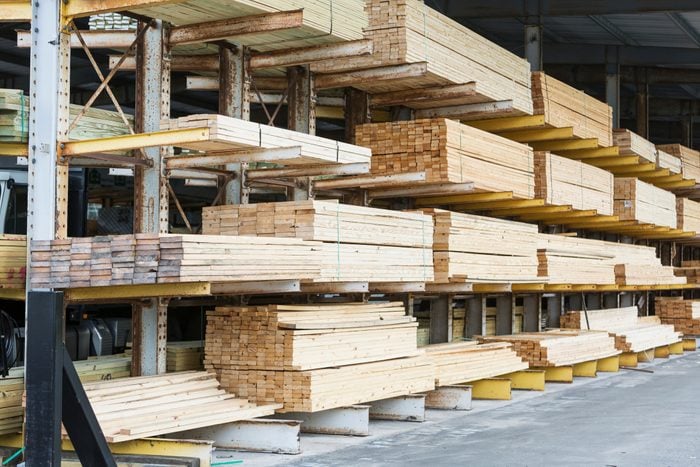Why Lumber Prices Are Soaring Again in 2022

After normalizing in the second half of 2021, lumber prices are skyrocketing again. Here's why.
The price of lumber in the U.S. has been on a roller coaster since the start of the pandemic. A host of factors drove the price up and down the last two years, creating uncertainty for homebuilders and anyone looking to purchase lumber for a project.
Lumber prices peaked in May 2021, with the cost of softwood lumber hitting well over $1,600 per thousand board feet. Just a few months later, lumber crashed back down to less than $600 per thousand board feet. It appeared the cost of wood might hover close to those pre-pandemic levels for some time.
Unfortunately, that was not the case. Lumber prices doubled from November 2021 to January 2022, climbing back over the $1,000 per thousand board feet threshold. Currently, the price remains volatile. It continued its gradual rise in the first half of January before declining sharply in the back half of the month.
So Why Are Lumber Prices Rising Again?
Canadian environmental issues
Several major storms struck parts of Canada in late 2021 and early 2022. Heavy rains and flooding in the West, including British Columbia, caused massive supply chain disruptions.
West Fraser Timber Co. Ltd, the Canadian-based forestry company, reported in November its weekly shipments in Western Canada had fallen by as much as 30 percent. These disruptions had massive repercussions in the U.S., since Canadian forests and lumber mills supply more than a quarter of the lumber to the American market.
Then there’s another environmental issue: The beetle infestation Canada has been dealing with since the ’90s. Female mountain pine beetles lay eggs underneath the bark of softwood trees. Over time, their larvae eat away at the tree until it dies. According to the Canadian Forest Service, mountain pine beetle infestations caused the loss of more 750 million cubic tons of pine wood.
Increased tariffs
One of the most significant economic factors driving up lumber prices is an increase in tariffs on Canadian lumber imports into the U.S.. Last Nov. 24th, the U.S. Commerce Department raised tariffs on imports from Canadian softwood producers to 17.99 percent, more than double the previous rate. That brought criticism from the U.S. construction industry.
“This decision undermines the historic funding commitment made to housing in the Build Back Better legislation and erodes efforts by Commerce Secretary Raimondo and other Biden administration officials to tackle the lumber and building materials supply issues plaguing the industry,” said Chuck Fowke, chairman of the National Association of Home Builders.
“Doubling the tariffs will only exacerbate market volatility, put upward pressure on lumber prices and make housing more expensive.”
Ken Simonson, chief economist for the Associated General Contractors of America, echoed Fowke’s sentiment. “A doubling of this tariff will only prolong the extreme price increases that have hit lumber repeatedly over the past 18 months,” Simonson said.
American lumber producers, however, were much more accepting of the tariffs, anticipating increased domestic production to fill the gap.
“The U.S. Lumber Coalition strongly urges the Administration to continue full trade law enforcement,” said Jason Brochu, chairman of the U.S. Lumber Coalition.
“More U.S. lumber being produced in America to meet domestic demand is a direct result of the enforcement. A level playing field is critical for the continued investment and growth of the domestic lumber industry and its hundreds of thousands of workers and thousands of communities across the United States.”


